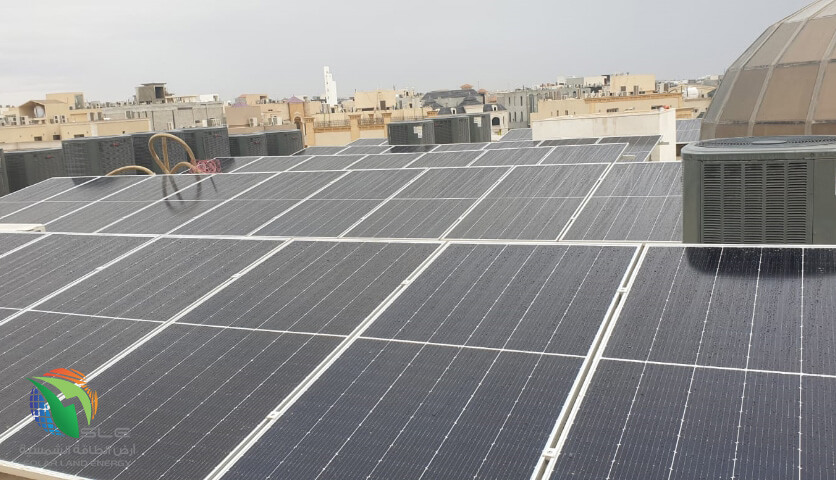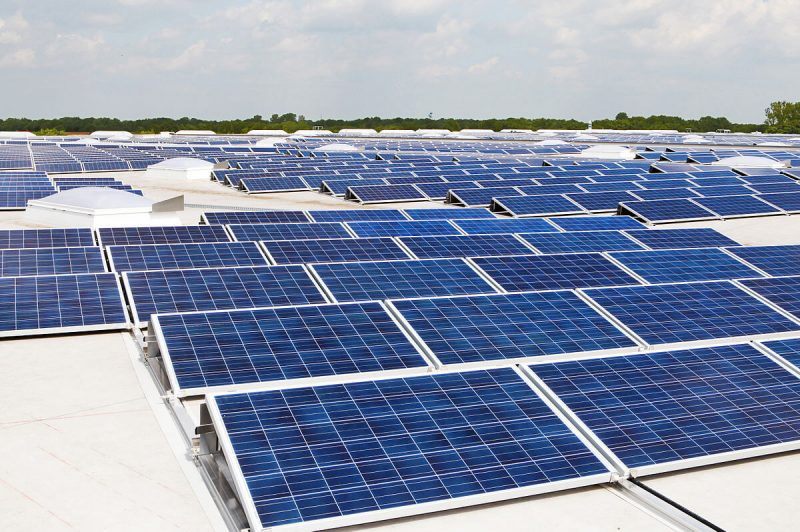
How does solar energy aid the energy transition in Saudi Arabia?
The Gulf countries are working to diversify their economies in the production of solar energy to achieve their zero-zero goals
A recent report by MESIA described Saudi Arabia as a “thriving market” for investment in renewable energy
Dubai: Gulf states are intensifying their transition to renewable energy by launching ambitious infrastructure projects designed to help reduce their reliance on oil and gas to meet their domestic energy needs.
Some of these projects will enable Saudi Arabia to significantly expand its total solar energy capacity by 2030. Specific development plans in the kingdom include the NEOM smart city, which will include a $5 billion hydrogen plant, and the Red Sea project, which will have the capacity to generate 400 megawatts of solar energy and will host the largest off-grid energy storage project in the world to date.
“Saudi Arabia is making remarkable progress in its plans to develop clean energy and reduce emissions,” Denisa Finnis, Secretary General of the Middle East Solar Industry Association, told Arab News.
Climate measures will go hand in hand with the continued growing demand for fossil fuels. As the world’s largest oil exporter, more than half of Saudi Arabia’s revenue comes from the fossil fuel sector.
How does solar energy aid the energy transition in Saudi Arabia?
MESIA’s latest report, published in January, listed Saudi Arabia as one of the “world’s booming markets in the renewable energy sector, attracting more investors and developers to participate in mega projects than any other country.” She said improvements in regulatory frameworks have helped the country position itself among the group of nations leading the clean energy revolution.
The kingdom’s $500 billion giant NEOM project will play a major role in efforts to diversify the Saudi economy while relying exclusively on clean energy resources. It is estimated that NEOM will require between 20 and 40 GW of solar and wind power to meet its energy needs when it becomes operational in 2025.
The authorities in the Kingdom are planning several other projects in regions such as the Red Sea, Medina, Qurayyat, Jeddah and Wadi Al Dawasir to help reach the national goal of net zero emissions by 2060.
Elsewhere in the region, the 800-MW Al Kharsaah solar project is expected to come online by mid-2022. In the UAE, the 5,000-MW Mohammed bin Rashid solar park in Dubai and the Al Dhafra solar project, which will Its production capacity is 2,000 megawatts, to be phased in by 2030.
Significantly, many countries in the region view the energy transition as an opportunity for economic growth and job creation, including the possibility of manufacturing solar energy components locally.
It is clear that the Gulf region has a geographical advantage in the solar energy sector, thanks to the abundance of sunlight and its proximity to Africa, Europe and other countries in the Middle East, which makes it an energy exporter in the long term.
“By capturing photovoltaic power from the largest source in the universe and providing access to electricity for regions that still rely on fossil fuels, we can reduce carbon emissions, lower costs in business operations and maintenance, and improve air quality, with further development in the sector providing jobs for generations to come.” Fiennes said.
In the five years since the announcement of the Vision 2030 economic reform agenda, Saudi authorities have been moving forward rapidly with their plans to develop the renewable energy sector. The kingdom has set itself the goal of generating half of its energy needs from renewable sources by 2030 – that’s 60 gigawatts from solar and other forms of clean energy.
Saudi Arabia also plans to increase sustainability by adopting a carbon circular economy approach, massive tree planting campaign, reducing carbon emissions by more than four percent from global contributions, and measures to combat pollution and land degradation.
The country also plans to issue its first green bonds early this year aligning with environmental, social and governance concerns. These bonds will become one of the main financing channels for the future of the Kingdom.
As part of Vision 2030, the Ministry of Energy is building two renewable energy plants, with a capacity of 600 megawatts, in the Third Industrial City in Jeddah and the Industrial City in Rabigh. The projects are being implemented through the Saudi Authority for Industrial Cities and Technology Zones (MODON).

Meanwhile, the battery storage project in the Red Sea will help ensure that the new resort destination that is taking shape along the kingdom’s west coast is fully powered by renewable energy sources. The kingdom also plans to establish 23 solar panel factories in 12 industrial cities. At the end of last year, the largest solar power plant in the region, with a production capacity of 1.2 gigawatts, was opened in the city of Tabuk.
Saudi Arabia’s successes and ambitious plans point to a broader trend. According to MESIA, solar capacity in the MENA region is likely to reach 8,309 MW this year as the region adds more renewable energy projects to meet individual national targets and transformation strategies.
“There is a massive expansion that can be expected in the next decade for the MENA region (which is) particularly attractive for investments in solar energy because the region has some of the highest levels of solar radiation in the world,” said Finnes.
In addition to production, she believes that the Arab region can take the lead in storage solutions, which is another area that has not yet been tapped.
Countries such as Algeria, Egypt, Iran, Iraq, Jordan, UAE, Oman, Qatar and Saudi Arabia are rapidly adopting the use of new technology in the renewable energy sector, including artificial intelligence systems. According to MESIA, the Saudi smart grid market is expected to be worth $3.6 billion by 2030. In fact, NEOM is expected to be powered entirely by AI-controlled solutions that use 100% renewable energy.
“Overall, the Middle East and North Africa region has an ideal combination of large usable land areas for solar PV plants and high levels of solar radiation to maximize power generation from solar energy,” MESIA said in its January report.
Solar and wind power aren’t the only renewables attracting a wave of investment. Green hydrogen is seen as an important emerging player in the energy mix as part of the process of achieving net zero targets set by regional governments, particularly in Saudi Arabia and the UAE.
All of these projects will be essential to efforts to mitigate the effects of climate change in a region where the damage it is causing is felt.
Mercedes Maroto Valer, director of the Research Center for Carbon Solutions at Heriot-Watt University in Dubai and director of the UK’s Industrial Decarbonization Research and Innovation Center, warns that the climate situation in the region is worsening.
“Temperatures are also rising, with the highest regional temperature recorded so far in Mutreba in Kuwait at 54 degrees Celsius,” she told Arab News.
However, with the development of new technologies and ambitious national targets agreed upon during the COP26 climate summit in Glasgow last November, there is still hope for a more sustainable future.
Fainis believes that the MENA region should develop a local supply chain for equipment and training programs for the local workforce, build capacity in technology transfer, and continue to attract foreign investment.
“As the population grows, demand for electricity will reach an all-time high,” she said. “Whether through energy auditors or regulators’ initiatives, countries will have to adapt to growing energy needs.”


